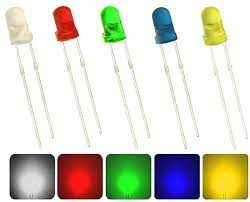Light Emitting Diodes (LED):

The Royal Swedish Academy of Sciences made a statement declaring that while incandescent light bulbs illuminated the 20th century, the 21st century would be illuminated by LED lamps.
- A diode is an electronic component about 5 mm wide. It has two points of contact, or terminals, called its anode and cathode.
- A diode’s primary purpose is to allow current to flow in only one direction.
- It achieves this using a P-N Junction Diode.
- The P-N junction occurs at the interface of p-type and n-type semiconductors.
- The positive side of the semiconductor, known as the p-side, possesses an abundance of holes.
- The negative side of the semiconductor, referred to as the n-side, contains an excess of electrons.
- Electrons are ‘places’ inside atoms that carry negative charge.
Light Emitting Diodes (LED):
- LEDs are semiconductors that can emit light when an electric current passes through them.
- Inside the diode’s p-n junction, the electrons have more energy than the holes.
- When an electron meets and occupies a hole, it releases energy into its surroundings.
- The Nobel Prize in Physics for 2014 was granted to Isamu Akasaki, Hiroshi Amano and Shuji Nakamura.
- Their achievement was recognized for the invention of efficient blue light-emitting diodes, a breakthrough that paved the way for the creation of bright and energy-efficient white light sources.
- Red and green diodes existed for a while, but the lack of blue light prevented the creation of white lamps.




